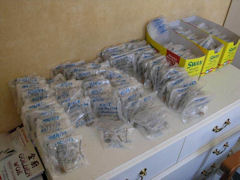

Figure 7: Distribution map of artefacts from Tywardreath and recorded on GoogleEarth
Plate 10: Artefacts recovered from Tywardreath individually bagged and numbered
In 2008 Andrews contacted the author with information regarding an assemblage of artefacts he had recovered in fields surrounding the village of Tywardreath, Cornwall. The significance of the assemblage quickly became apparent: at the time of writing it included over 2000 artefacts, the vast majority of which were clear signatures of mid-17th century warfare including musket balls, cannon balls, bandolier caps and contemporary buckles and buttons (Plate 10). Crucially, Andrews had from an early stage individually recorded and bagged each artefact using a GPS. In addition he inputted the co-ordinates into a Google Earth programme to create a distribution map that shows the wide spread of material across several fields (Fig. 7). As each artefact was uniquely identifiable, it was possible to cross-reference the location data with the material, which allowed accurate analysis and interpretation of the distribution by the author with the some degree of confidence. Importantly for the heritage management of this site, its existence as an artefact scatter has been noted within the Historic Environment Register of Cornwall, which has already highlighted the need for an archaeological evaluation prior to development near the site.


Figure 7: Distribution map of artefacts from Tywardreath and recorded on GoogleEarth
Plate 10: Artefacts recovered from Tywardreath individually bagged and numbered
Over the last three years Andrews has continued to investigate the area, with the assistance of a carefully selected team of local metal detectorists from Cornwall. Andrews' work, which he has named the Tywardreath Battlefield Project, has attracted interest from other parties, including the Cornwall Archaeological Society, and has received much local support. Under the banner of this project he has done much within the local community to inspire interest in Tywardreath's previously unknown Civil War history by organising events including a hugely successful re-enactment with the Sealed Knot, which once again saw 17th-century soldiers marching through the village streets. He now aims to generate funding for a small museum within the village and, with the assistance of the author, publish a book on his findings. This work by Andrews represents a significant contribution to our understanding of English Civil War activity in Cornwall, and for the first time places Tywardreath very much at the centre of the conflict. What makes this case more remarkable was that Andrews not only recognised the archaeological potential of the site, but shared his discoveries for the benefit the local community.
As we have already seen, hobbyist metal detectorists have made a valuable contribution to the development of battlefield archaeology as a discipline, in some cases recognising the potential of scatters of conflict-related material long before archaeologists came on the scene. But as with impacting activity, the ability to individually record artefacts and recognise their potential lies at the core of what may be considered a positive contribution. However, it is not always easy to distinguish a clear line between impact and contribution, as often those with the best intentions may unwittingly damage a site they had aimed to investigate; for example, when Pettet first began his initial work on Sedgemoor he did not make the connection between the artefact and its findspot. Therefore although he had plotted its position it was not possible to correlate that information with the artefact in question. Another metal detectorist, who discovered artefacts relating to a possible skirmish site in Shadingfield, Suffolk, and contacted the author after reading her article in The Searcher magazine (Ferguson 2009), was clearly troubled by the thought that he may have damaged the site by not properly recording his finds. He has subsequently bought a hand-held GPS device and is now recording his finds and reporting them to the PAS.
Internet Archaeology is an open access journal based in the Department of Archaeology, University of York. Except where otherwise noted, content from this work may be used under the terms of the Creative Commons Attribution 3.0 (CC BY) Unported licence, which permits unrestricted use, distribution, and reproduction in any medium, provided that attribution to the author(s), the title of the work, the Internet Archaeology journal and the relevant URL/DOI are given.
Terms and Conditions | Legal Statements | Privacy Policy | Cookies Policy | Citing Internet Archaeology
Internet Archaeology content is preserved for the long term with the Archaeology Data Service. Help sustain and support open access publication by donating to our Open Access Archaeology Fund.
File last updated: Thu Feb 28 2013